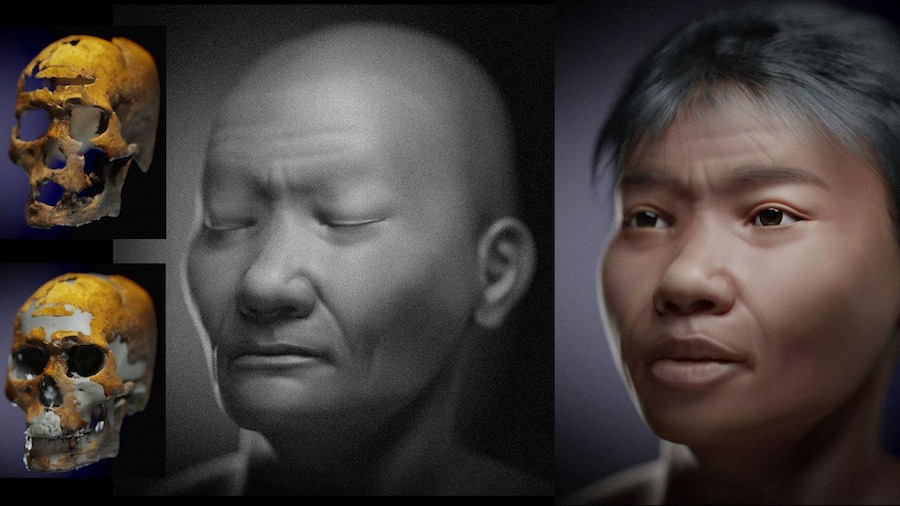See the lifelike face of Zuzu, a man who lived 9,600 years ago in Brazil
A facial approximation reveals what Zuzu, a man who lived 9,600 years ago in Brazil, may have looked like.

In 1997, archaeologists unearthed a skeleton buried in the fetal position at Toca dos Coqueiros, an archaeological site in Brazil's Serra da Capivara National Park. Based on the size and shape of the skull, they identified the remains as female and named the skeleton Zuzu. But that classification has remained steeped in controversy, with many researchers claiming the deceased was actually male.
Now, a new facial approximation of the 9,600-year-old skull may help put this debate to rest.
Last year, researchers took dozens of photos from different angles of the skull, which is on display at the Museum of Nature in Piauí, Brazil. Using photogrammetry, they digitally stitched the 57 photographs together to create a virtual 3D model of the skull "in order to reveal the face of that figure so mysterious and so important to Brazilian history," the researchers wrote in their study, published Jan. 25.
"Trying to recover the appearance that an individual had in life thousands of years ago is a way to bring them to the present day, bringing them closer to the public," first author Moacir Elias Santos, an archaeologist with the Ciro Flamarion Cardoso Archaeology Museum in Brazil, told Live Science in an email. "The main interest was to be able to glimpse the face of Zuzu, whose skeleton is one of the most important finds in the Serra da Capivara National Park region."
To inform their work, they used computerized tomography (CT scans) from living virtual donors and applied that information to "adjust the structure of the skull" by including tissue thickness markers, study co-author Cícero Moraes, a Brazilian graphics expert, told Live Science in an email.
Related: Look into the eyes of a Stone Age woman in this incredibly lifelike facial reconstruction
"[We] adjust the structure of the skull to transform the donor's skull into a volume almost equal to Zuzu's skull," Moraes said. "When we do this, the soft tissue follows this deformation/adaptation and results in a face that is expected, [and] compatible with Zuzu in life."
Sign up for the Live Science daily newsletter now
Get the world’s most fascinating discoveries delivered straight to your inbox.
The researchers created two results, both depicting a young man with a broad nose and lips. One of the approximations included hair and eyebrows based on information provided by the virtual donors, and the other featured Zuzu with closed eyes and without hair. Because the digital face was "slightly emaciated," the researchers retracted the lower jaw to match a gap that came from some missing teeth, according to the study.
"Although the skull has affinity with an Asian population, among individuals of such ancestry there are a large number of structural differences, which are circumvented by closing the eyelids," the researchers wrote in the study. "The image was also rendered in grayscale (black and white) as there is no accurate information about the skin color. Therefore, such an image would be the closest to what the real face could be."
"The most interesting thing when looking at Zuzu's skull is having an idea of what he would have looked like in life," Santos said. "It is a reunion with one of the oldest ancestors of our country."
Jennifer Nalewicki is former Live Science staff writer and Salt Lake City-based journalist whose work has been featured in The New York Times, Smithsonian Magazine, Scientific American, Popular Mechanics and more. She covers several science topics from planet Earth to paleontology and archaeology to health and culture. Prior to freelancing, Jennifer held an Editor role at Time Inc. Jennifer has a bachelor's degree in Journalism from The University of Texas at Austin.










